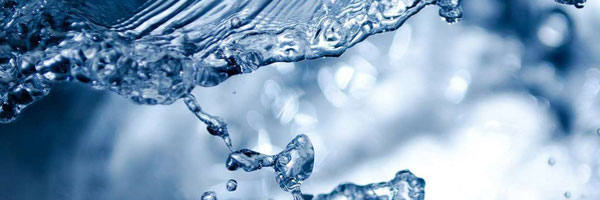Unveiling Natures Secrets To Water Purification Methods
Grade 6
Presentation
No video provided
Hypothesis
Our hypothesis is that the activated charcoal filter will be the best method of water purification due to all the levels of filtration (sand, gravel, activated charcoal and cotton) that will remove all or most of the debris in the water and some of the bacteira
Research
Many people in the world don't have access to clean drinking water, so we had the idea to experiment with different types of purification methods. Although some places won't have the materials to do this, we looked for the most natural ways to cleanse the dirty water.
We will use 3 methods of purification to test our hypothesis:
- Boiling (boil): Boiling water is a simple way to purify water. Water needs to be heated to 100℃ for at least several minutes and this kills many harmful bacteria and viruses.1
- Adsorption (orange peels): Adsorption is a filtering process in which materials in water form a sort of film on the outside of the fruit peel. This process is used for the removal of heavy metals from water (example: Lead).2
- Filtration (activated charcoal): Water is filtered through 3 stages in this filter. The gravel and sand filter out the larger and smaller pieces of debris and the activated charcoal removes some of the other bacteria and other contaminants.3
Variables
Independent: The purification method (orange peels, boiling the water and activated charcoal)
Dependent:
1) The appearance of the water after each experiment
2) How much bacteria grows on the Petri dishes after each experiment.
.
Controlled: The water sample (melted snow-with dog urine)
Procedure
Water Sample Collection:
- Collected yellow snow from our garden (urine)
- Added additional soil from garden
- All samples for the experiments came from the same main sample
Boiling:
- Water sample taken from main sample and placed in pot on stove
- Turned on heat and allowed sample to come to a boil
- Once the sample started boiling we kept it boiling for 3 minutes
- Use sterile swabs to add water sample to 3 petri dishes, label dishes and tape closed
Orange peels:
- Place orange peels in 99% isopropyl (rubbing) alcohol for three days
- Remove the orange peels and cut into little pieces
- Place orange peels in contaminated water samples for 1 day
- Remove orange peels
- Use sterile swabs to add water sample to 3 petri dishes, label dishes and tape closed
Activated charcoal filter:
- Cut a 2L soda bottle in half with scissors (keep the cap on)
- Stuff the neck of the bottle with cotton balls
- Add 1 cup of activated charcoal, 1 cup sand and 1 cup gravel (in that order) in the bottle
- Loosen cap on bottle (to allow water to flow)
- Pour water sample in the top of the filter
- Collect water
- Use sterile swabs to add water sample to 3 petri dishes, label dishes and tape closed
Observations
Boiling:
Water sample: Remained cloudy but a lighter colour brown
Petri Dish: Bacteria that grew was mostly white in colour, very little yellow and just one spot of orange. The bacteria grew in spots vs in an s pattern.
Orange peel:
Water sample: Remained cloudy and full of dirt also still has an orange/brown tint to the water.
Petri Dish: Bacteria covered where we swabbed the dish and was mostly creamy yellow with some white and one orange spot.
Activated charcoal:
Water sample: We did 3 different runs of the water through the filter. The first time it went through the filter, it had a brown tint but the other two turned into this clear pale yellow colour.
Petri dish: Bacteria covered the plate and was creamy yellow in colour with some creamy white
Analysis
|
Purification Method |
Visual |
Petri Dish |
|
Contaminated water sample |
Dark muddy brown Completely opaque |
Dark yellow colonies all over surface with black |
|
Boiling |
Cloudy and brown |
Bacteria present (mostly white, yellow and orange) |
|
Orange Peel |
Cloudy with an orange colour |
Bacteria present (mostly yellow and orange) |
|
Activated Charcoal Filtration |
Clear with a slight pale yellow colour |
Bacteria present (yellow, white and orange) |
The type of analysis we performed was descriptive. We described the water samples after experiments and the bacteria appearance on the petri dishes.
Conclusion
Our hypothesis was that the activated charcoal would do the best in filtering and removing bacteria from the water. However, we learned that the hypothesis was only partially correct. The activated charcoal filter did the best in filtering out debris but it did not remove much of the bacteria.
Petri dishes
Bacteria:
The boiling method did the best in removing bacteria.
Clearness:
The activated charcoal sample did the best in removing debris. It was the most clear out of all the methods. .Both the fruit peel and the boiling sample were very cloudy and still have debris in the water.
Application
The methods used in our expieriment could be used to purify water in rural areas or when camping when you dont have accsess to chemicals used to purify water.
Sources Of Error
Hi
Citations
1. Boiling:
https://www.epa.gov/ground-water-and-drinking-water/emergency-disinfection-drinking-water
2. Orange peel:
3. Activated charcoal:
https://www.generationgenius.com/activities/water-quality-and-distribution-activity-for-kids/
Acknowledgement
Rosemarie and Desiree
Rosemarie (Allie’s mom) for helping us with printing,Oven usage and materials. Desiree (Betty's mom) thank you for the supplies and car rides.
Mrs.Radomski
Thank you for meeting us every Tuesday and looking over our work. Also for being an amazing mentor teacher.
Mrs.Mcneil
For doing the science fair this year if she didn't do it this year our school wouldn't be doing it.

